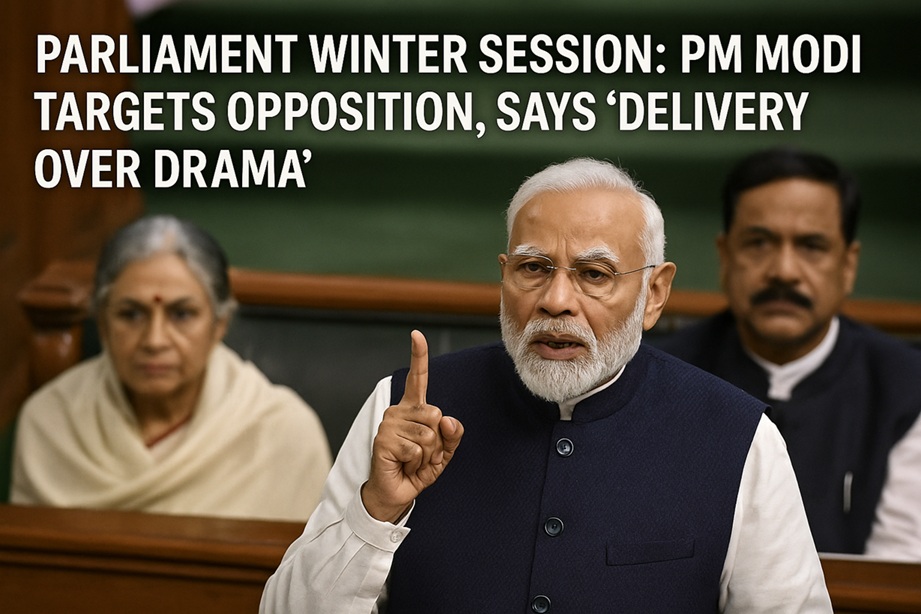Analysis of India’s Latest Education Policy-2020: A Step Towards Transformative Change
Introduction

India’s education system plays a crucial role in shaping the nation’s future. The recent introduction of the New Education Policy (NEP)-2020 in India marks a significant milestone in the country’s pursuit of educational excellence. This blog post aims to provide an analysis of the latest education policy and its potential impact on the Indian education landscape.
Education is the foundation of any progressive society, shaping the minds of its citizens and paving the way for future growth and development. In India, the education system has played a crucial role in the country’s history, providing knowledge and skills to millions of students. However, over time, it has become evident that the system faces numerous challenges that hinder its ability to meet the needs of a rapidly changing world. This realization has led to a pressing need for education reform in India.
1. Outdated Curriculum and Rote Learning
One of the primary reasons for the need for education reform is the prevalence of an outdated curriculum and the overemphasis on rote learning ie. mechanical or memorization technique. Traditionally, the focus has been on memorization rather than understanding and critical thinking. This approach limits students’ creativity and problem-solving abilities, making them ill-equipped to face real-world challenges.
2. Inequality and Lack of Access
India’s education system suffers from significant disparities, especially in rural and economically disadvantaged areas. Access to quality education remains a distant dream for many children due to the lack of schools, infrastructure, and qualified teachers in remote regions. Bridging this gap is crucial to ensure equal opportunities for all.
3. Lack of Vocational Training
The conventional education system has been primarily oriented towards academic pursuits, often neglecting the importance of vocational training. As a result, many students graduate without the necessary skills to enter the job market or pursue alternative career paths. Incorporating vocational training into the mainstream education system is essential to equip students with practical skills and enhance employability.
4. Teacher Shortage and Quality
The quality of education largely depends on the competence and dedication of teachers. Unfortunately, India faces a shortage of qualified teachers, particularly in rural areas. Additionally, teacher training and professional development programs need improvement to enhance their effectiveness in the classroom.
5. Lack of Focus on Holistic Development
A well-rounded education should not only focus on academic knowledge but also on the holistic development of students. This includes fostering creativity, critical thinking, communication skills, emotional intelligence, and physical fitness. A comprehensive education approach is essential to produce well-rounded individuals capable of thriving in various spheres of life.
6. Gender Disparities
Despite progress in recent years, gender disparities persist in India’s education system. Girls, in particular, face barriers to education due to social norms, safety concerns, and lack of support. Empowering girls through education is crucial for gender equality and the overall progress of society.
7. Lack of Emphasis on Research and Innovation
A vibrant education system must encourage research, innovation, and the pursuit of knowledge. India’s education policy needs to foster an environment that nurtures creativity and inspires students to explore new ideas and contribute to the advancement of knowledge.
8. Lack of digitalisation
With the world rapidly moving towards digitalization, the digital divide poses a significant challenge for education in India. Not all students have access to technology or the internet, limiting their ability to participate in digital learning and access online resources.
9. Lack of Global Competitiveness:
In a globalized world, India’s education system must prepare students to compete on an international level. The curriculum should be aligned with global standards and equip students with skills and knowledge relevant in the international job market.
In conclusion, the need for education reform in India is evident from the various challenges and shortcomings the current system faces. To build a strong and prosperous nation, it is essential to address these issues and create a more inclusive, flexible, and innovative education system that empowers students to excel in a rapidly changing world. Education reform is not merely a necessity; it is a pathway to transformative change and a brighter future for the nation and its citizens. So important measures have been taken in India’s Latest Education Policy-2020 to improve the education system in India
Holistic Development of all students
The New Education Policy (NEP) recognizes the need for holistic development of students. It emphasizes the integration of academic, physical, and emotional aspects to nurture well-rounded individuals. The policy aims to go beyond traditional academic learning and encourages the inclusion of co-curricular activities, sports, arts, and social-emotional learning. By focusing on holistic development, the NEP intends to create individuals who are not only academically proficient but also possess essential life skills.
Early Childhood Education
The NEP places significant importance on early childhood education (ECE). It recognizes that the early years of a child’s life are crucial for their cognitive and socio-emotional development. The policy aims to provide universal access to quality preschool education, ensuring that all children have a strong foundation for future learning. By investing in ECE, the NEP aims to bridge the learning gaps that often arise in later stages and promote equal opportunities for all children.
Flexible and Multidisciplinary Learning:
The NEP promotes a flexible and multidisciplinary approach to learning. It encourages students to explore diverse subjects and offers multiple exit points, allowing them to choose their preferred career paths. The policy suggests a shift from the traditional model of a fixed set of subjects to a more personalized and interdisciplinary curriculum. This approach aims to foster creativity, critical thinking, and problem-solving skills among students, enabling them to adapt to the changing needs of the 21st-century workforce.
Technological Integration:

Recognizing the transformative power of technology, the NEP emphasizes the integration of technology in education. It aims to equip schools with digital infrastructure, promote online learning platforms, and facilitate the use of educational technology tools. The policy highlights the importance of digital literacy and aims to bridge the digital divide by ensuring access to quality digital resources for all students. By leveraging technology, the NEP aims to enhance teaching and learning methodologies, making education more engaging, interactive, and accessible.
Vocational Education and Skill Development:
The NEP acknowledges the importance of vocational education and skill development in preparing students for the job market. It seeks to integrate vocational training into mainstream education, providing students with practical skills aligned with industry requirements. The policy aims to break the societal bias towards traditional academic pathways and promote vocational education as a viable and respected career choice. By offering vocational training opportunities, the NEP aims to reduce unemployment rates, empower students with relevant employability skills, and bridge the gap between education and the job market.
Teacher Training and Professional Development:
Recognizing the pivotal role of teachers, the NEP places a strong emphasis on their training and professional development. The policy aims to enhance the quality of teaching and learning by providing continuous learning opportunities, mentoring programs, and capacity-building initiatives for teachers. The NEP also suggests the creation of a National Professional Standards for Teachers (NPST) framework to ensure high standards of teaching. By investing in teacher training and professional development, the policy seeks to improve educational outcomes and create a competent and motivated teaching workforce.
Restructuring of School Curriculums:
The new policy focuses on making school curriculums more flexible and comprehensive. It encourages cross-disciplinary learning, allowing students to explore diverse subjects and develop a broader understanding of the world.
Universal Access to Education:
The policy aims to ensure that every child in the country receives quality education, irrespective of their background or location. Efforts are being made to build more schools in remote areas and provide necessary resources to create a conducive learning environment.
Promoting Multilingualism:
The policy advocates for the preservation and promotion of regional languages while also encouraging students to learn multiple languages, including classical languages and foreign languages.
Implications for Higher Education:
The policy also extends its impact to the higher education sector, with a focus on research, innovation, and developing critical thinking skills among students pursuing advanced degrees. The policy emphasizes the need for modern and well-equipped educational institutions. Investments are being made to improve infrastructure, technology, and facilities in schools and colleges.
Challenges in Implementation:
While the Education Policy-2020 presents a promising vision for education in India, its successful implementation faces several challenges. These include budget constraints, resistance to change, and the need for effective coordination between different stakeholders.
Conclusion
The latest education policy in India, the New Education Policy, is a significant step towards transforming the country’s education system. By focusing on holistic development, flexible learning, technology integration, vocational education, and teacher training, the policy aims to create a more inclusive, innovative, and globally competitive education system. The policy has garnered mixed reactions from the public.
While many have praised its vision, some have expressed concerns about its feasibility and impact on existing institutions. While its success will depend on effective implementation and collaboration between stakeholders, the NEP holds the potential to shape the future of education in India and empower learners to thrive in a rapidly changing world.
FAQ’s
1. What is the main objective of India’s Latest Education Policy-2020?
The primary objective of India’s Latest Education Policy-2020 is to bring transformative changes to the country’s education system, fostering a knowledge-driven society with an emphasis on universal access, quality education, and practical skills.
2. How will the policy address gender disparities in education?
The policy addresses gender disparities by promoting female enrolment and retention in schools, providing incentives and support systems to encourage girls’ education.
3. What changes will be made to school curriculums?
The new policy will restructure school curriculums to be more flexible and multidisciplinary, encouraging cross-disciplinary learning and critical thinking.
4. How will vocational training be promoted under the new policy?
India’s Latest Education Policy-2020 integrates vocational training into the mainstream education system, bridging the gap between theoretical knowledge and practical skills to make students job-ready.
5. Is the use of technology a key focus in the policy?
Yes, the policy emphasizes the integration of technology in education to enhance the learning experience, facilitate remote learning, and provide access to a vast array of educational resources.
Reference:







